The Best Colors for Red Undertone Skin: A Complete Guide

Key Takeaways
Know your undertone, not just your **skin tone**. **Red undertones** are the rosy hues beneath your skin and they remain even when your surface color tans or fades.
💫 Discover Your Complete Color Palette
Ready to discover all the colors that make you look radiant? Our comprehensive color analysis will reveal your complete personal palette - perfect for hair, makeup, and wardrobe decisions.
Take Color Analysis Quiz →Don't EVER assume red undertones are warm. Color theory will allow you to experiment with cool, neutral, and warm shades so your reds, berries and magentas come across as harmonious —not harsh.
Aim for greens, teals, cool blue, jewel colors, and cool neutrals such as soft white and gray, and cautiously test oranges and acid yellows in natural light.
Construct ensembles with complementary, analogous or monochromatic color schemes. Try teal with berry, violet with magenta or layered reds from blush to crimson and then ground the look with simple neutrals.
Link colors to your skin depth for the ultimate glow. Bonus tip! Light skin adores the icy pastels, medium skin sparkles in emerald and burgundy, while deep skin glows in bold red, purples and blues.
Try smart before you buy. Use the vein, jewelry and white paper tests in natural daylight, photograph colors in various lighting as they can drastically change, and always keep notes on the tones that consistently look good on you.
Colors for red undertones work best when they cool the warmth and balance the skin. Think soft neutrals — taupe, stone and cool beige — for everyday wear.
Blues with gray notes, forest green and deep teal flatter without clash. True white knocks cream into a cocked hat, and silver eclipses gold for accessories.
Go for neutrals when it comes to makeup – neutral foundations, rosy-brown blush and berry lips. If you're designing a wardrobe or a makeup kit, go off these tones as your foundation and construct with caution.
📚 Recent Articles
What are red undertones
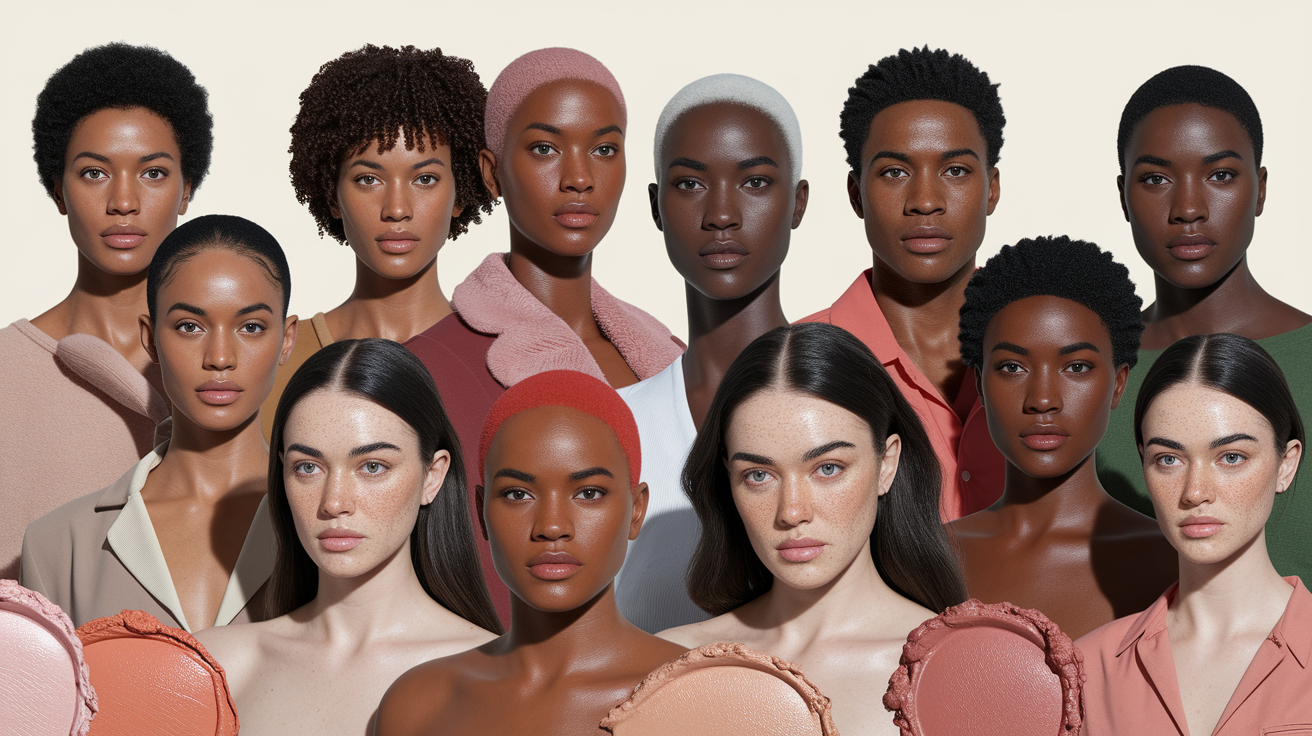
Red undertones are the pink, rosy, or reddish undertones in skin that influence how the entire complexion reads. It's not like surface redness from a sunburn or rash, which dissipates as the skin regenerates. These undertones guide decisions in clothing, makeup and accessories as colors move beside them, particularly in mixed light.
Being able to see them clearly actually aids in constructing a palette that feels balanced and has a natural glow. In color theory, undertones reside under a color's mass tone, so they appear in paint, lipstick, and foundation, as well as on skin.
Skin tone vs undertone
Its undertone is the consistent color beneath it—typically red, yellow, olive, or neutral—that doesn't really alter with sun or fade. Even if your skin darkens in summer by 2–3 shades, your undertone remains.
That's why your **best lipstick** still works across seasons, while your foundation depth shifts. Match to undertone not just tone! Two women can have a medium skin tone and wear the same red dress and look completely different.
One with red undertones might shine in blue-red lipstick, whereas one with golden undertones may get better results from tomato red. Olive skin frequently blends green and red undertones – a combination that can cause certain pinks to gray and certain beiges to turn drab—and pure white, when held up against your complexion, helps you detect it quickly.
To verify, hold your bare skin or a product swatch up next to a neutral white background or color wheel. If you see a pinkish cast alongside white, you probably have red undertones. Try in daylight and in indoor light; both reveal some of the story.
The warmth myth
Not all red undertones have a warm hue. Some lean cool (raspberry or rose, say), and some read neutral when the red nestles gently beneath beige or olive. Red undertones 'converse' with adjacent colors.
High-intensity, cool reds can sharpen with blue-based shades, muted, earthy notes may sit better with soft, low-intensity reds. Incandescents can cozy up those red undertones; certain fluorescents can drive them cooler or flatter, etc. Test colors in daylight and nighttime to prevent surprises.
Don't think red undertones just go with warm palettes. Use a color wheel: blue-reds (cool) flatter cool-leaning reds; orange-reds (warm) will flatter warm-leaning reds; muted brick or rose-brown to bridge neutral.
Choose the appropriate red by testing against a pure swatch of red and a white card. If skin looks fresher and even, you found a match.
Celebrating redness
It's time to embrace red undertones as a feature, not a flaw. Try to emphasize, not mask. In beauty, think blue-red lipstick, soft berry blush or neutral rose-brown eyes.
In clothes, lean into complementary or analogous colors: teal or forest green can make rosy skin pop, while burgundy, rose, and soft mauve echo the undertone for a seamless look. Olive skin with green and red undertones: Deep teal, muted plum or warm rose-beige all balance the push-pull without turning ashy.
In design/paint, test your shade against a neutral wall or fan deck — a "white" with red undertones can tint pink in tight corners. Knowing the red undertones is important in art and design and beauty — because it informs decisions that stand the test of skin tone and light.
It helps you select foundation that won't oxidize oddly, lipstick that stays true, and paint that appears the same at noon and at dusk.
Your best colors for red undertones
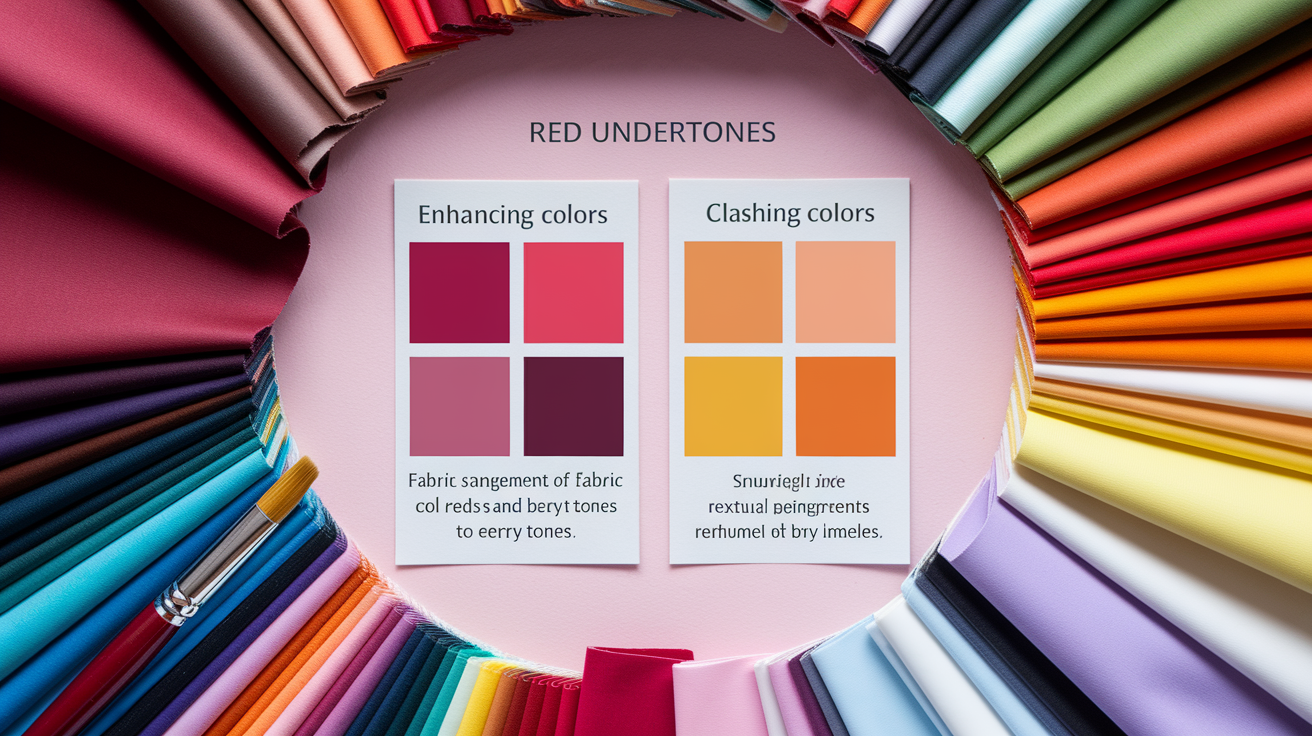
So, the fastest road to peace begins with cool bases. Blue- and pink-based colors work against red undertones, while yellow-rich shades battle them. Choose the **best colors** for your unique complexion, then customize for your skin tone, hair color, and style.
* Best enhancers: navy, cobalt, teal, dark emerald, violet, berry, rose, raspberry, true red, mint, light coral, dusty rose, marsala, chocolate brown
* Best balancers: cool gray, soft white, cool taupe, charcoal, turquoise, cool blues
* Best specific reds: blue-red, cherry, cranberry, wine, berry tones
* Colors to limit: acid yellow, mustard, orange-based red, warm gold, pumpkin, some warm browns
1. Complementary colors
Green and teal sit opposite red on the color wheel, so they create crisp contrast. Dark emerald, teal, and turquoise elevate red undertones without letting the skin look ruddy. Cool blues—navy, cobalt, slate—pair nicely, particularly for work wear or evening ensembles.
Use a color wheel to get specific. If your red reads cool, select greens with a blue cast (teal, pine). If your red is brighter, experiment with clearer turquoise or cobalt.
Complementary quick-reference table:
* Red undertone (cool) — Pair with: teal, pine, navy
* Red undertone (neutral) — Pair with: emerald, cobalt, turquoise
* Red undertone (fair depth) — Pair with: mint, sea green, soft navy
* Red undertone (deep depth) — Pair with: dark emerald, peacock, ink blue
2. Analogous colors
Pinks, magentas and purples sit adjacent to red and meld effortlessly. Consider violet, berry, raspberry and classic rose—each has a blue or pink base that compliments red undertones.
Build with three neighbors: red + berry + violet for outfits or makeup. One shade is always dominant, one is supportive, and one is used as an accent.
The blend seems subtle but lush. It frames the face, subdues sallowness and keeps warmth in check. Experiment with lilac knit, raspberry lip, and wine shoe, then interchange shades until it hits.
3. Monochromatic colors
Head-to-toe red works when you mix up shade and texture. Go from blush to cherry to deep crimson, and combine matte wool, silk satin and suede for dimension.
Try as many reds as you can in daylight to identify your blue-red sweet spot – step back 1-2 meters to judge. Anchor with cool neutrals—soft white, gray bag or silver jewelry—to keep it slick.
4. Neutral colors
Cool neutrals ground the foundation. Soft white, gray, charcoal and cool taupe keep their form but don't add heat. Warm beiges can accentuate redness, so use cautiously.
Things like cobalt scarf, teal liner or berry lip are so definitely doable and they're a nice contrast to your red hair! For nails and makeup, choose cool nudes, rose-mauve or soft gray so your skin's red undertone can breathe.
5. Colors to reconsider
Orange-based reds, acid yellow, mustard, pumpkin and some warm browns can clash. Bright orange and heavy gold can make skin look ruddy!
Try in natural light, by a window, and mark standouts. Keep a humble list of those "no-go" shades you've tried more than once.
How to find your undertone
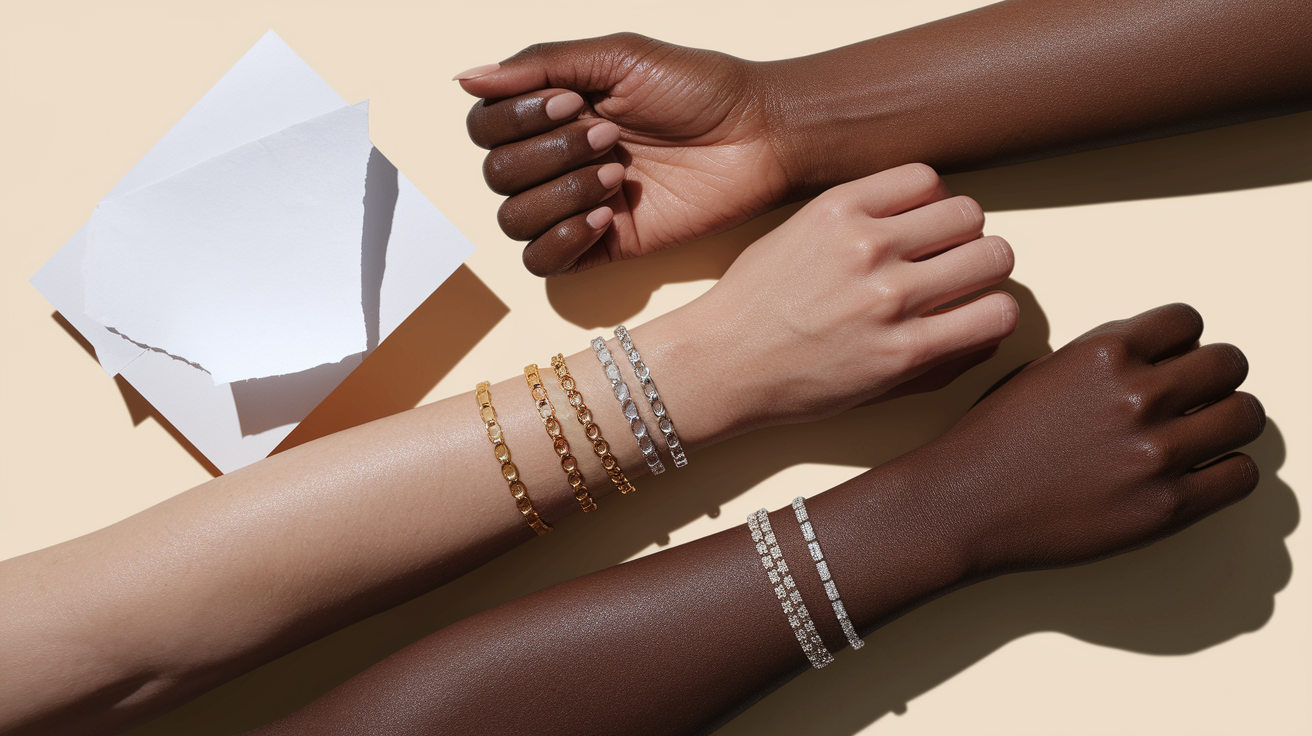
Undertone is the consistent color under your skin tone. It doesn't shift with sun or season. It sits in three main groups: cool (pink, red, or bluish), warm (yellow, peachy, or golden), and neutral (a mix of both). Most people fall one way but others have a mixture.
For red undertones, seek tests that provide consistent outcomes in natural light.
1. Work in natural light. Stand by a window, noon if possible. Indoor bulbs skew warm and can mute pink or amplify yellow. Steer clear of tinted glass. Consider the weather as well, because strong sun can bleach out color hints.
2. Run three checks: White Paper Test, Jewelry Test, and Vein Test. Each isolates a clue: surface cast, reflective contrast, and vascular hue.
3. Experiment with a foundation swatch test. Stripe one warm shade and one cool shade on the jaw. The one that blends clean with no gray cast indicates your undertone. Keep the stripes 1–2 cm apart to compare edges.
4. Record your results. Record what you see from each test and time of day. An easy grid develops a clear profile and cuts down on the guesswork.
5. Remember olive skin. It has warm and neutral with an olive's distinct green tinge. Olive can mask pink, so trust all tests, not one.
6. Distinguish between tone and undertone. Tone varies, undertone remains. This saves you from chasing seasonal shifts.
The vein test
Check veins on the inside of your wrist or forearm in daylight near a window. Keep your arm steady and focus on the main color, not the skin surrounding it.
Blue or purple veins indicate that you have **cool undertones**. Greenish veins suggest warm or olive.
Red undertones can appear blended or subdued, thus this experiment by itself can be ambiguous. If your veins appear both blue and green, take note of the possible neutral or olive.
Match both wrists. If they don't, recheck at a different time of day.
The jewelry test
Try silver and gold pieces of roughly equal size side by side. Direct your attention to your face, not the jewelry, and observe how your skin responds.
Silver is more flattering on cool or red undertones. Gold tends to lift warm tones. Most women prefer one metal every day without realizing it, and that habit can clue you in to undertone.
Observe which metal makes your skin appear even, clear and bright instead of gray or sallow. Use this outcome to validate, not determine solo.
The white test
Hold some white paper or a white cotton tee to your face in daylight. Step away from colored walls to avoid bounce.
If your skin reads rosy, pinkish, or a little red, that favors cool or red undertones. If it turns sallow or yellow, you probably lean warm. Steer clear of off‑white or cream, they warm the scene and can mask pink.
Repeat on another day and record the outcome. Cross-reference with your vein/jewelry checks for a solid determination.
Colors by skin depth
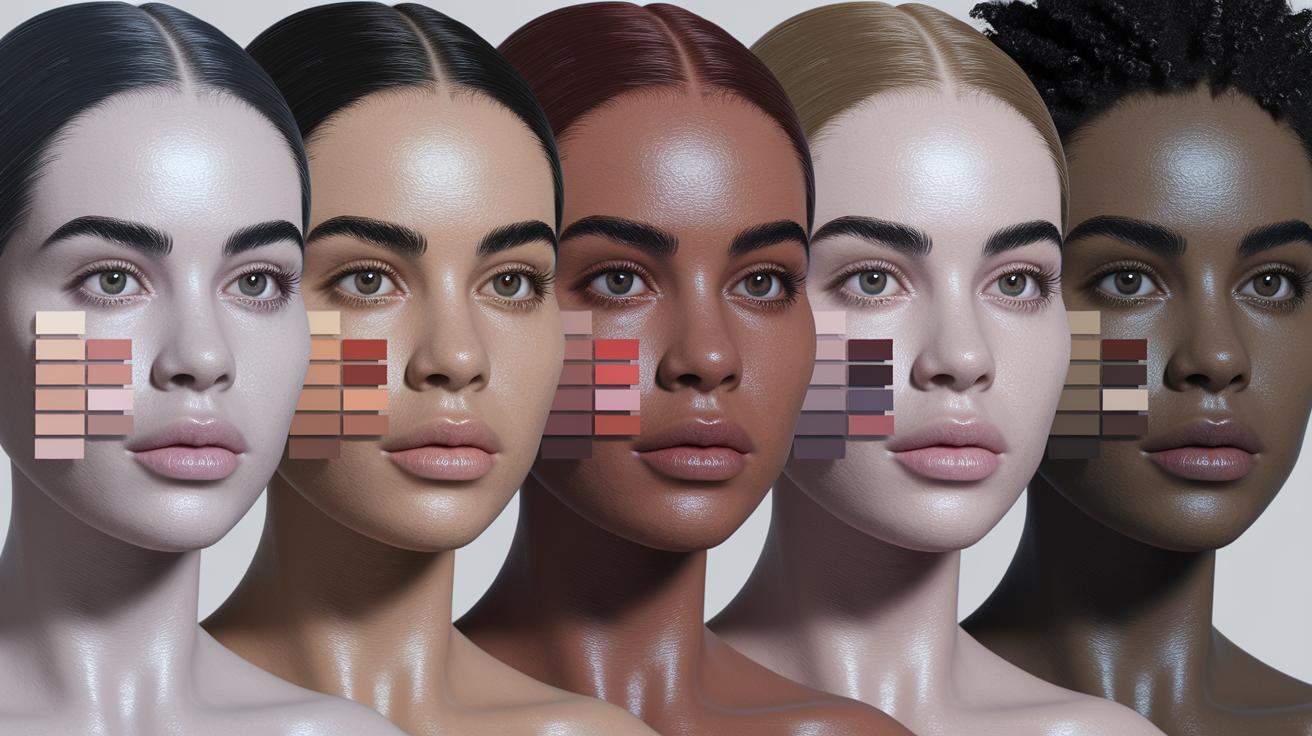
Skin depth shifts how red undertones read, so the same red can either glow or glare based on how light or deep your complexion is. Begin by cross-referencing undertone—warm, cool, or neutral—by the way pigments play on skin, then add hair and eye color to add nuance.
Build a custom chart from the table, then test swatches near daylight (10:00–14:00) to see balance and brightness.
| Skin depth | Works best | Use with care | Neutrals that help |
|---|---|---|---|
| Fair–Light | Icy blue, lavender, soft pink, mint, lilac | Bright orange, neon red | Soft white, dove gray, oyster white |
| Medium–Tan | Emerald, cobalt, berry, mint, moss, primrose yellow | Fiery orange, highlighter pink | Warm beige, warm gray, cream, sage |
| Deep–Dark | True red, magenta, deep purple, bold blue | Ashy taupe, dusty beige | Chocolate brown, old gold, copper, bronze |
Fair to light skin
Cool pastels soothe surface redness and swiff the face fresh. Icy blues, lavender, soft pinks and mint eject heat, while lilac and periwinkle bring airy lift without ruckus. Cool undertones that veer blue often shine in soft white, periwinkle, peacock accents and true red kept muted, plus dusty rose and lilac for blush.
Stay away from severe, b**right red**s or oranges that can swamp pale skin. If you're in the market for red, take your pick — classic rose or a raspberry stain, tapped and smudged. Soft white and dove gray are forgiving, oyster white trumps stark optic white in proximity to the face.
For cosmetics, go sheer. Shades to fall for: blush in petal pink or dusty rose, lipstick in balm-like rose, watermelon tint or sheer coral. The target is a natural rosy flush, not a saturated slab.
Medium to tan skin
Rich jewel tones sit well on this depth because they correspond with the weight of the skin. Emerald, cobalt blue and berry provide clarity. Maroon, burgundy and brick red provide depth without going into orange.
Neutrals with a blue or warm lean do well in peach, light olive, soft lime, moss, french blue, sage, cream, warm gray, aubergine, old gold. Counter heat with warm beige, primrose yellow and muted coral. They resonate warmth while holding red undertones firm.
Gold touches—earrings, thin chains, bronzy sunnies—complete the look and compliment freckles or sun-kissed edges. If you're cool-toned with medium–brown skin, note classics: navy, cobalt, traditional rose, mint, violet, raspberry, dark emerald, evergreen. These remain crisp.
Deep to dark skin
High-saturation shades adore this depth. Vibrant reds, deep purples and bold blues, magenta and sapphire read clean and bright against red undertones. Chocolate brown, wine red and cobalt frame the face in sharp contrast.
Metallics add warmth: copper, bronze, and old gold highlight cheekbones and eyes. No dull, ashy tones—flat taupe or gray-beige can subdue natural radiance.
Cool undertones that veer blue can lean into chocolate brown, dusty rose, marsala, cassis, soft white, true red, peacock and periwinkle colors. Warm undertones from ivory to deep brown usually bloom beautifully with hot pink, true red, violet, azure, emerald, ice pink, acid yellow and light grey marl.
Create a personal color chart: list undertone, note hair and eye color, swatch five shades per row by depth, and log which shades brighten, dull, or redden the face. Update each season as tan fades.
Beyond the color swatch
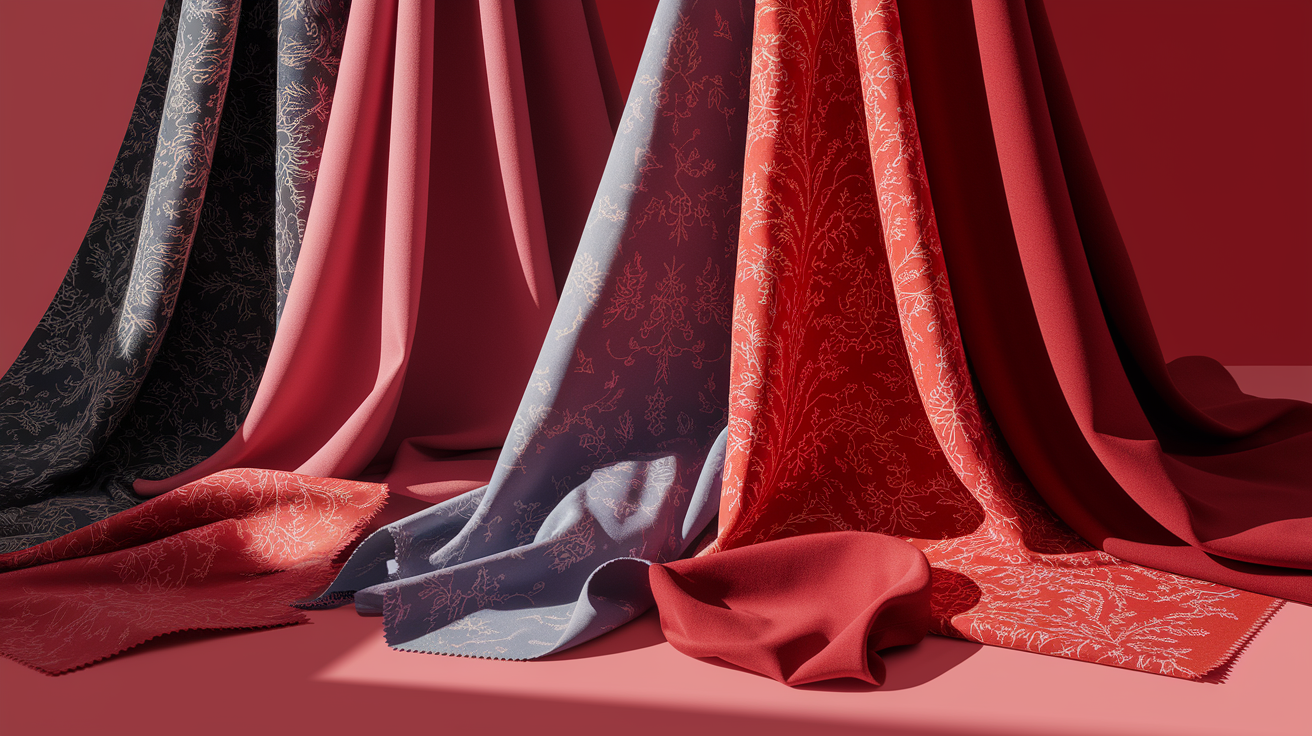
Color acts in layers, where the best colors for your skin tone can enhance your overall complexion. Red undertones in skin—cool, neutral, or warm—intersect with color in kinetic ways, so experiment with different shades of red polish to find the perfect red that complements your unique complexion.
Fabric and texture
Silk, satin and polished cotton reflect light which can make the red undertones appear vibrant and even. A blue-green satin blouse, for instance, can bounce a cool cast that counteracts skin's warmth and diminishes surface redness.
Fine viscose and tencel drape beautifully and maintain color nice and clear on camera. Matte textures mute reflection. If you want less pink in the skin, then reach for brushed cotton, crepe or sueded finishes in cool navies, forest or charcoal. These soak in the light and reduce contrast at the face.
Layer textures within a single color family to add depth, without visual noise. Skip the swatch and go straight for the dash–try a matte navy tee layered beneath a glossy midnight blazer, then a knit scarf in slate. Same color swatch lane, different playground.
Wool and linen change saturation: wool often deepens color and reads richer; linen diffuses dye and looks airier, sometimes showing the undertone more than the mass tone.
The role of light
Verify color in daylight initially. When you're standing by a window on a natural mid-day sun and hold the fabric up to your face, natural light is the most truthful in terms of undertone match.
Colors shift under bulbs: yellow incandescent light warms and can push reds and oranges louder, while green fluorescent light cools and can gray out pinks and violets. LED can be different, so pay attention to the bulb temperature.
Snap rapid-fire shots in each situation, daylight, office fluorescents, evening lamps and contrast. You begin to notice that the identical teal looks bluer in one room and greener in another.
If you dress for evening, add a touch more contrast: a cooler lip or a crisper shirt collar in blue, since warm indoor light will warm everything. For day, softer matte textures can suffice.
Print and pattern
Go for prints with cool or jewel-toned grounds—ink, emerald, plum—to balance red undertones when you're still rocking color. Sometimes, a floral with a deep navy field calms the overall read.
Patterns disrupt large expanses of a single color, so any redness doesn't reverberate throughout the outfit. Plaids, stripes or ditsy motifs distribute contrast and tamp down punch.
Color blocking puts the best hue by your face: place teal, cobalt, or berry near the neckline, and keep warmer or bright blocks away from the chin. Mix scales for balance: a small polka dot shirt under a large-check jacket keeps movement without chaos.
Recall, colors show undertone when adjacent to pure samples or color wheel, and they shift when viewed solo versus in combo. Employ both tests. No hard rules, only what flatters you.
The psychology of your colors
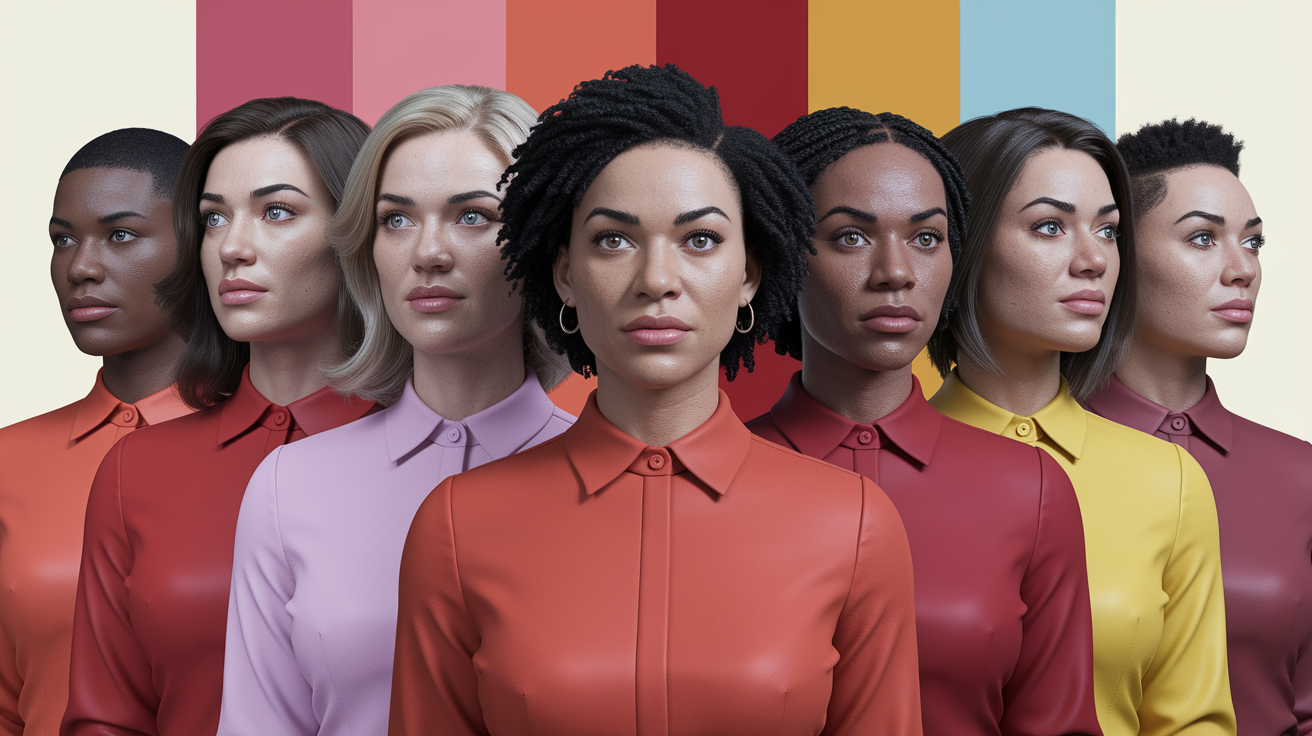
Color decisions influence your mood, your image and how your red undertones translate in person and on camera. While research is still underway, studies hint at colors' ability to cause physiological reactions.
Red is stimulating—associated with passion, ambition and courage—but the 'incorrect' red near a warm-red complexion can accentuate flush or redness. Blue tends to read calm and trustworthy. Green is one of the world's favorite colours, and people react very positively to it.
White denotes clarity and attention. Brown can seem reliable and stable but drab, lighter browns come across honest and down to earth. Yellow lifts in little touches. As Goethe observed in "Theory of Colours," colors are symbolic, and it's your job to make them work for you.
Projecting confidence
Lean into your best reds — blue-red for cool-leaning red undertones, tomato or rust for warm-leaning ones, and soft brick for neutral. Pair them with friendly allies: navy, charcoal, soft white, olive, and cool pinks that don't fight your natural warmth.
For high-stakes moments, choose bold, saturated hues with clean edges: crimson dress, oxblood blazer, or a deep cherry tie. Strong chroma reads decisive on stage and in bright light, while mid-depth saturation suits daylight or office environments.
Your signature color becomes shorthand for you. Perhaps it's a bold raspberry lip or a garnet shirtdress that never fails. When you say it again and again, people associate that color with you, which establishes low-key power.
Use color to direct the eye. A red scarf around your face accentuates expression. A merlot belt or shoe highlights line and posture. Use high-contrast details where you want focus, and mute the rest.
Creating harmony
Construct ensembles with color schemes that complement, not clash. Start with one hero red, then add nearby tones: burgundy with plum and navy, or tomato with terracotta and cream. The look is balanced, not busy.
Pair makeup and accessories to the outfit's temperature. Blue-red lip with cool reds, coral blush to **warm red**s. Jewelry matters too: silver cools, gold warms, rose gold bridges both.
Analogous or neutral tones soothe the frame. Olive, taupe, sand, soft gray, and off-white all back up red undertones without clatter. White says clean intent, stone or ecru feels softer.
Stay away from clashes that jack up the redness. Neon yellows or sharp limes too close to the face can jar. If you're delirious for yellow, keep it petite—belt, nails, trim.
Making a statement
Go vivid when you want presence: scarlet dress, magenta shirt, or a red-and-ink-blue combo. Blue reads calm, red reads passion—the combination feels vibrant but not overwhelming.
A statement piece does the heavy lift. Red lipstick with crisp liner, a lacquered clutch or bold cuff sets the tone minus the heat-stroke.
Try fresh pairs: cherry with forest green, rust with sky blue, burgundy with blush, even red with soft lavender. Green tends to land well and complement a lot of red undertones.
Counteract the punch with neutrals. Anchor hot reds with navy, charcoal, cocoa or soft white. Light brown brings stability, dark brown can feel oppressive. Employ with purpose.
Conclusion
To wear red undertones, believe your eye, then try in actual light. Skin tells the truth quick. A soft blue tee can cool a warm flush. Moss green scarf to calm the heat. A deep plum lip can anchor a brash cheek. Little switches, BIG scores.
For your core, begin with navy, charcoal, cool white and soft taupe. Accent one daring jewel tone, like teal or ruby. Throw in texture, like linen or knit, to soften intense shades. For evenings, try wine, forest or ink blue. To work, lean on steel gray or stone.
Ready to secure your palette! Store away the brief list, conduct a mirror test by a window, and select two colors to wear this week.
Frequently Asked Questions
What are red undertones?
Red undertones indicate that your skin possesses a warm, pink-to-red tint underneath, which can be especially prominent in light skin tones. This aspect influences your overall complexion and determines the best colors that work well on you, enhancing or emphasizing redness.
What colors look best with red undertones?
Choose cool, balanced shades like sapphire, emerald, and teal, as well as crisp white. Soft rose, blush, and cool taupe flatter light skin tones, while avoiding fiery oranges that intensify the red vibe.
How can I tell if I have red undertones?
Look at your skin in daylight. If you blush at the drop of a hat, have rosy cheeks post-pump, and can pull off silver jewelry, you likely have warm undertones and a unique complexion that leans toward red tones.
Do makeup colors change with skin depth and red undertones?
Yes. For fair skin tones, experiment with cool pinks and soft mauves. For medium skin tones, try berry, cool coral, and taupe. For deep skin tones, opt for plum, wine, and rich jewel tones, sticking to neutral or cool bases to counteract it.
What clothing colors reduce the look of redness?
Try cool neutrals: charcoal, slate, cool beige, and navy. Jewel tones like emerald and amethyst come to the rescue. No hot reds and neon oranges around your face. Opt for matte fabrics as opposed to shiny ones, which increase contrast.
How do I go beyond color swatches to test accuracy?
Try it on in natural light, pulling your hair back. Put on a block of color around your face and have someone snap a picture. Contrast photos between days to see how the best colors enhance your overall complexion and eye brightness. Take what makes your skin tone look calmer.
How does color psychology help people with red undertones?
Cool blues and greens indicate calm and professionalism, while jewel tones are confident without emphasizing redness. Soft neutrals, especially for different skin tones, seem accessible, boosting how you feel and how people perceive your unique complexion.